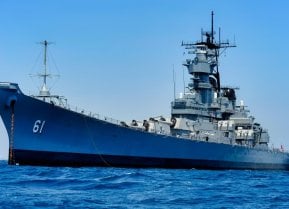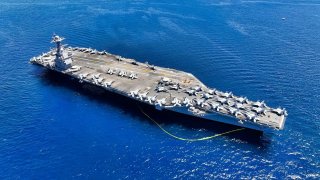Aircraft Carriers: The Ultimate Floating Airbase or Obsolete Missile Target?
Far from obsolete, the aircraft carrier battle group includes an assortment of cruisers, destroyers, and attack submarines for additional firepower in the form of cruise missiles and anti-ship missiles.
Much has been said about China’s anti-ship ballistic missiles (ASBMs) and their threat to American aircraft carriers. Iran has likewise made deterring American carriers a hallmark of its strategy.
China began its current military buildup after it felt humiliated during the 1996 Taiwan Crisis. Then-U.S. President Bill Clinton had an aircraft carrier battle group steam through the Taiwan Strait as a reminder to Beijing to stay away.
China has invested significant resources into developing ASBMs that can strike carrier battle groups from over 1,000 miles away. This speaks to the threat carriers pose.
Carriers Still Relevant or Obsolete?
Despite the anti-ship deterrents China, Iran, and Russia field, aircraft carriers retain a potency of their own.
After Hamas launched its October 7 attack on Israel, U.S. President Joe Biden immediately ordered the U.S. Navy to send the USS Gerald R. Ford to the Eastern Mediterranean. The carrier is meant to deter Iran and its proxy Hezbollah from launching attacks on Israel from the north. The Navy also deployed the USS Dwight D. Eisenhower to the Persian Gulf as a further deterrent against Iran.
America’s carriers are sometimes called “4.5 acres of sovereign U.S. territory.” They project power in a manner no other weapons platform can. Americans saw the power of carriers firsthand at Pearl Harbor on Dec. 7, 1941, when Japanese carrier-borne planes sank much of the U.S. Pacific Fleet as it lay at anchor.
Aircraft carriers can bring fighters and bombers wherever they are needed, without needing permission from a host country. In many cases, land bases are hard to come by, or the nearest base is far away from the newest hot spot.
“This advantage is particularly apparent in the Israel-Gaza crisis. The U.S. military maintains air bases worldwide, but coverage is spotty. The nearest American air base to Israel is Incirlik air base in Turkey, a distance of 300 miles away. Aircraft flying from Turkey to Israel would also have to fly past Syria, a hostile country with an air force of its own,” Kyle Mizokami writes in Popular Mechanics. “Giving Syria a wide berth would require flying about 100 extra miles and fighter escorts, adding to the complexity of reaching Israel. A whole other layer of complexity is that the Turkish host government may not politically see eye to eye with the U.S. government on the mission.”
The USS Gerald R. Ford’s F/A-18 fighter bombers can target almost any location in the Eastern Mediterranean region. Decisionmakers can take immediate action wherever it is needed at a moment’s notice. It provides a nervous guessing game for the other side.
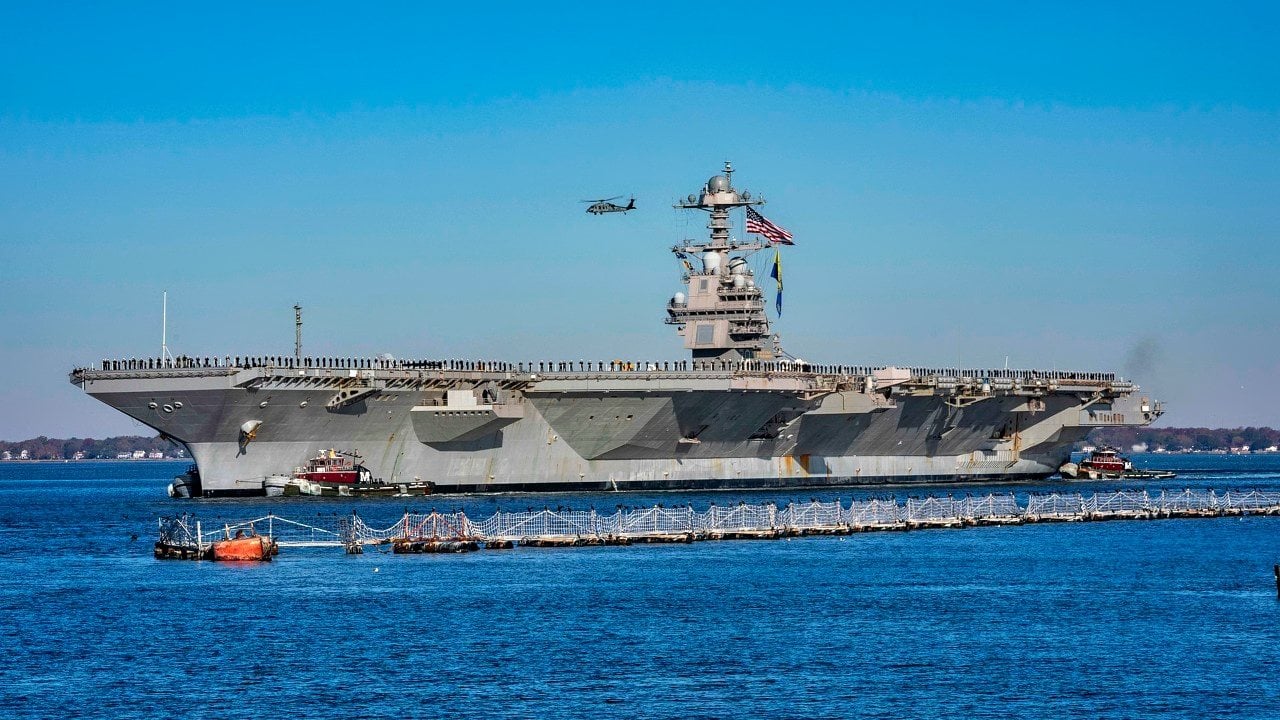
Aircraft Carriers: The Big Stick
Each carrier battle group includes an assortment of cruisers, destroyers, and attack submarines for additional firepower in the form of cruise missiles and anti-ship missiles.
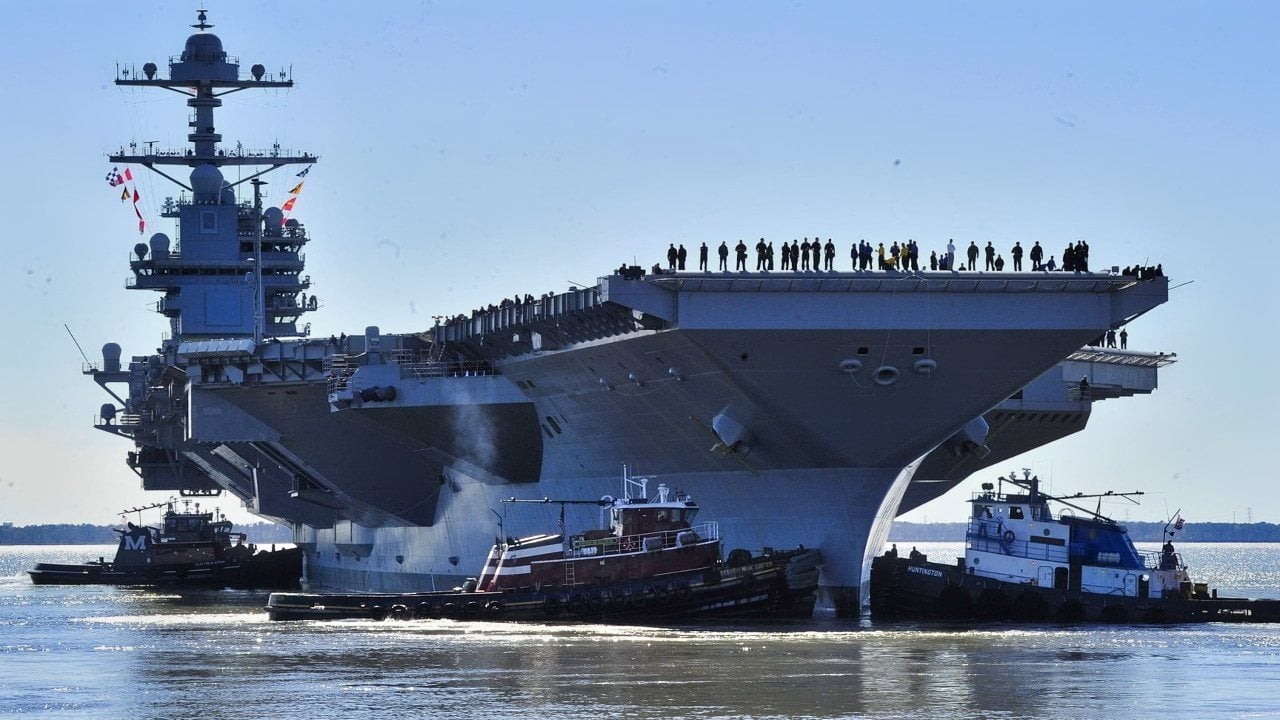
“Carriers can signal intent like no other weapon system. If an attack submarine shows up off your coast, you’d probably have no idea it’s there. If a B-2 stealth bomber crew is training to strike targets in your country, you won’t know unless they execute the mission. But if an aircraft carrier shows up on your coastline, it’s impossible to miss. It is also a clear sign that you are on Washington’s radar—and not in a good way,” Mikozami writes.
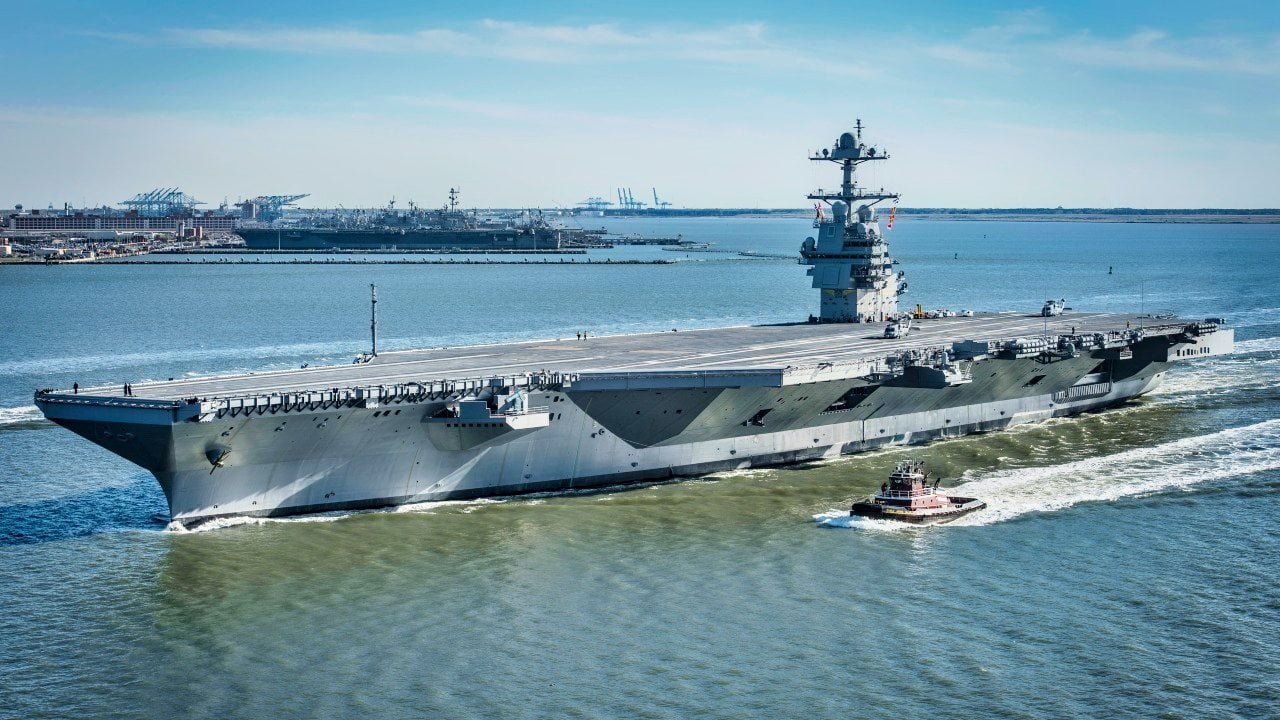
Having an aircraft carrier battle group at hand can be a powerful diplomatic tool when hard-nosed diplomacy is needed.
About the Author: John Rossomando
John Rossomando is a defense and counterterrorism analyst and served as Senior Analyst for Counterterrorism at The Investigative Project on Terrorism for eight years. His work has been featured in numerous publications such as The American Thinker, The National Interest, National Review Online, Daily Wire, Red Alert Politics, CNSNews.com, The Daily Caller, Human Events, Newsmax, The American Spectator, TownHall.com, and Crisis Magazine. He also served as senior managing editor of The Bulletin, a 100,000-circulation daily newspaper in Philadelphia, and received the Pennsylvania Associated Press Managing Editors first-place award for his reporting.
